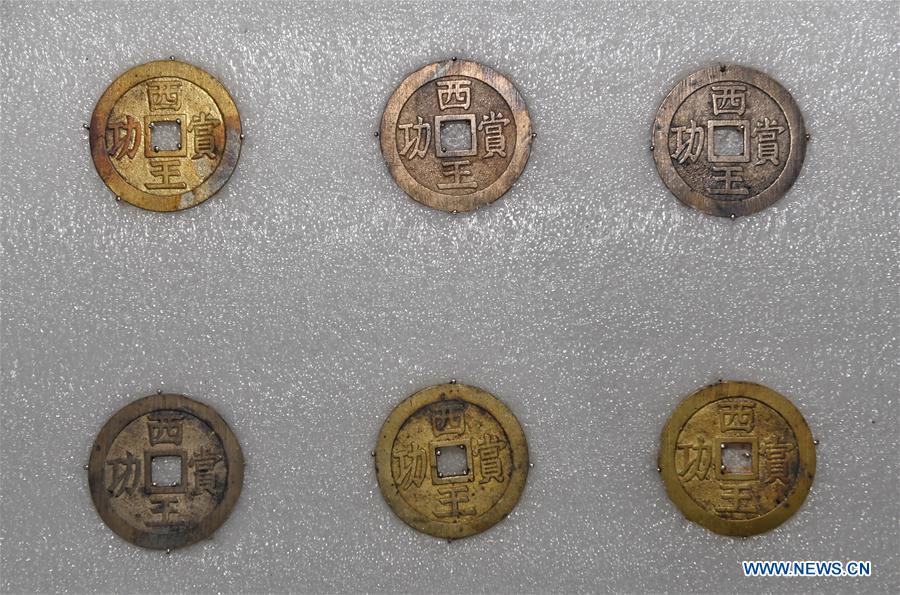Plentiful relics recovered at southwest China treasure ruins
 0 Comment(s)
0 Comment(s) Print
Print E-mail Xinhua, April 21, 2018
E-mail Xinhua, April 21, 2018
Photo taken on April 16, 2018 shows coins recovered at an underwater treasure ruins to the south of the city of Chengdu, southwest China's Sichuan Province. Chinese archaeologists have recovered more than 12,000 relics during the latest round of excavation at the treasure ruins, according to Sichuan Provincial Cultural Relics and Archaeology Research Institute. It is believed that in 1646, the peasant uprising leader Zhang Xianzhong was defeated in the area by Ming Dynasty troops while attempting to transfer his treasure to the south. About 1,000 boats loaded with money and valuables are said to have sunk during the skirmish. [Photo/Xinhua]
Chinese archaeologists have recovered more than 12,000 relics during the latest round of excavation at an underwater treasure ruins to the south of the city of Chengdu, local authorities said Friday.
The items recovered included firearms, iron weapons such as swords, knives and spears, silver ingots, gold and silver coins, domestic objects and jewelry, according to Sichuan Provincial Cultural Relics and Archaeology Research Institute.
Among the items, an incomplete gold stamp, which is believed to have been owned by a ruler of a tributary state of the Ming Dynasty (1368-1644), is extremely valuable. The stamp has the Chinese character "Shu" (the alternative name of present-day Sichuan) carved on it.
The excavation started in late January, covering an area of 10,000 square meters. Archaeologists said they expected the actual treasure site would be greater than 1 million square meters.
Last year, archaeologists discovered more than 30,000 relics from the riverbed.
Archaeologists plan to check and restore the relics, organize exhibitions and work with local authorities to build a museum and a heritage park.
It is believed that in 1646, the peasant uprising leader Zhang Xianzhong was defeated in the area by Ming Dynasty troops while attempting to transfer his treasure to the south. About 1,000 boats loaded with money and valuables are said to have sunk during the skirmish.
ac15dbca-09c3-4cec-83b4-ffc940292bbb.jpg)




